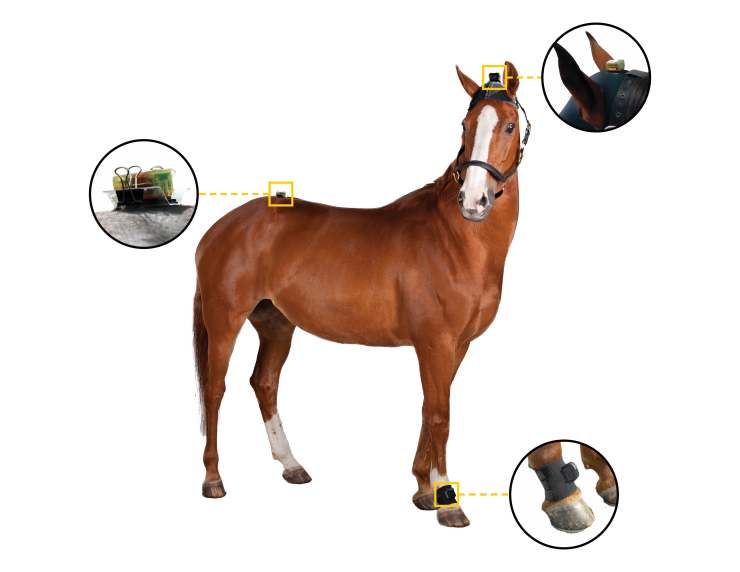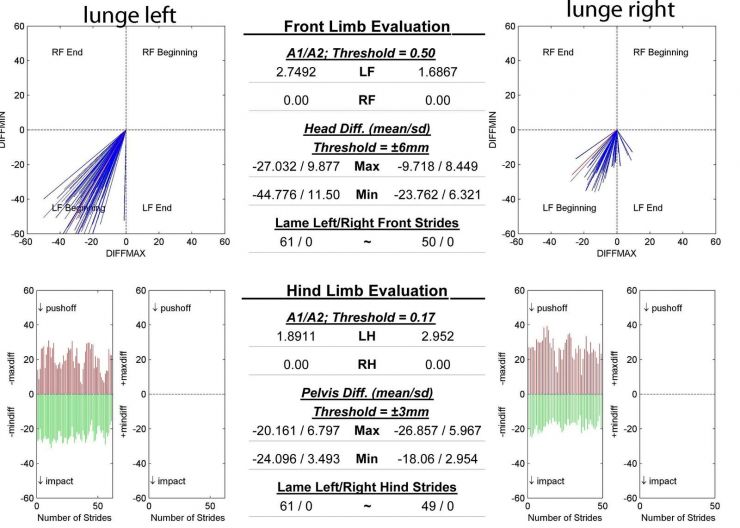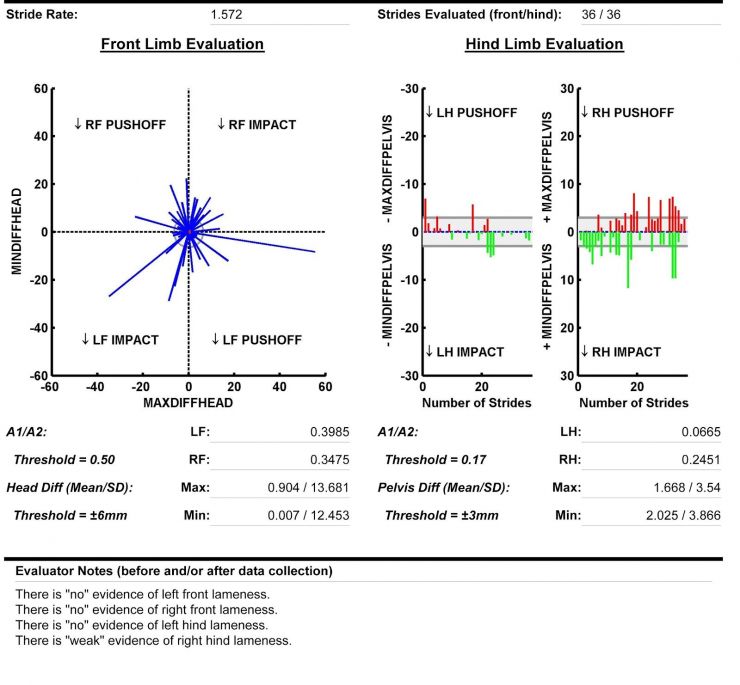The EL2 and You: Our EL2 will help your horse.
I have great news for you and your horse! with the goal of every rider and vet is to keep your horse sound, TEVA is now proud to offer a very powerful tool to achieve this goal. With this high-tech device, we have better ability to keep your horse sound. This allows us to be proactive rather than reactive to lameness. Not only does the EL2 diagnose lameness sooner, but more importantly, we will use it to establish a soundness baseline, using an objective, easy-to-read report.
Please take a few minutes to read below and strongly consider the possibilities. It doesn’t matter if you trail ride, foxhunt, or jump big, you and your horse will benefit from EL2 computerized analysis of your horse’s gait.
“Every ridden horse will benefit from a baseline soundness evaluation.“ We all agree that baseline blood work in people and animals is helpful, so an objective SOUNDNESS measurement would be incredibly beneficial to horse, rider and vet. I am very excited about establishing a soundness baseline, and later monitoring your horse over the years with this highly accurate system – the Equinosis Lameness Locator or “EL2.”
This will be directly helpful in implementing early horse shoeing changes, initiating broad therapies to avoid joint injections, and serving to better detail gait patterns to predict breakdown.
In about 20 minutes, we can record your horse’s symmetry with 3 small sensors that transmit data to a tablet programmed with advanced algorithms developed and maintained by the University of Missouri.

After a baseline is established, eventually, when something changes, or you feel that “something isn’t right” under saddle, we can focus on the change, and not spend extra time and money exploring a pre-existing, subtle, asymmetry that was not previously clinically relevant. By focusing on what has changed and the degree of change from the baseline results, we will provide a better diagnosis and treatment for your horse.
TEVA will use the EL2 in 2 ways:
Baseline Evaluations: This analysis and consultation will be extremely beneficial because I will analyze your horse when it is sound for what you are doing today. The results will be maintained in our patient records and will be used as comparison when your horse is no longer sound for whatever reason.
Lameness Exams: As part of every workup in a subtle lameness exam, expect to see EL2 incorporated when flexions and lunging are necessary to identify the lameness.
Our goal is to keep your horse sound as much as possible or reduce the overall impact of lameness when lameness emerges. This will keep you in the saddle longer and promote improved wellness for your horse. This goal is realized by establishing your horse’s baseline, identifying where problems may arise before they do, or initiate early intervention before a true lameness emerges.
Read further to understand “real-life” examples and how they may relate to your horse.
Figure 1 below shows the left and right lunge plots analyzed side-by-side. This horse is mildly lame in its left hind in both circles with a compensatory left front lameness. This horse is “off behind” according to its owner. We used the EL2 to assist in identifying the lame leg (and did not inadvertently start nerve blocking the left front leg).
RECOMMENDATION: This horse was subsequently identified with mild left hock arthritis and treated.

Figure 2 below is an active, clinically-sound foxhunter with a very subtle left front limb lameness only seen on the tight left circle on hard ground. The right hind is a compensatory gait. We were just establishing a baseline.
RECOMMENDATION: I recommended a slight change in shoeing to address this issue and we’ll likely avert a problem from progressing.

Figure 3 is a low-to-mid level horse used in a variety of disciplines (occasional hunter, fox hunter, trail rides) with a typical profile. He has a very low grade right hind lameness established during a baseline EL2 eval.
RECOMMENDATION: We treated with a broad spectrum anti-arthritis medication (OsPhos) and we will continue to monitor this horse closely for changes, potentially avoiding a more serious lameness down the road.

Lastly, Figure 4 below is a sound mid-level jumper on a straight line exam with the EL2 (tested to establish a computerized baseline). No problem seen. We have an objective baseline to compare for future analysis or potential sales.
RECOMMENDATION: As a sales prospect, it is reassuring to know that the horse will present well to a potential buyer. Likewise, we can monitor the horses’ soundness as he increases work to higher levels.

One of TEVA’s goals is the prevention of lameness and early recognition of issues before they become real problems. This cutting-edge device will help keep TEVA ahead of your horse’s troubles – saving you money and saving your horse from potentially preventable injury.
We think every ridden horse will benefit from a baseline soundness evaluation and consultation.
Stay up-to-date through our TEVApedia RSS FEED.
TEVApedia Articles
Available 24/7/365
CALL 703.505.2320
FOR EQUINE EMERGENCY SERVICES
Office & Pharmacy Hours
Monday 8:00 AM - 4:30 PM
Tuesday 8:00 AM - 4:30 PM
Wednesday 8:00 AM - 4:30 PM
Thursday 8:00 AM - 4:30 PM
Friday 8:00 AM - 4:30 PM
Contact Us
24033 Lacey's Tavern Ct, Aldie, VA, 20105
703.505.2320